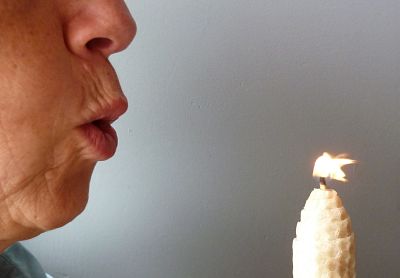 One thing you’ll never hear an Alexander teacher say is ‘Just take a deep breath’. Alexander teachers help thousands of people with their breathing and voice issues. They enable people to discover how to restore easier breathing and stronger, clearer voice. In the process, people also tend to feel calmer and more confident. How is this achieved? Not by trying to work out how to ‘breathe or speak better’, but by becoming more self-aware and reducing any habits that are getting in the way of our natural overall functioning.
One thing you’ll never hear an Alexander teacher say is ‘Just take a deep breath’. Alexander teachers help thousands of people with their breathing and voice issues. They enable people to discover how to restore easier breathing and stronger, clearer voice. In the process, people also tend to feel calmer and more confident. How is this achieved? Not by trying to work out how to ‘breathe or speak better’, but by becoming more self-aware and reducing any habits that are getting in the way of our natural overall functioning.
Breathing is an amazingly complex and wonderful system, finely tuned by a myriad of automatic processes to ensure that the appropriate amount of air is delivered exactly when it is needed. There is absolutely no way that our conscious mind could work out how and when to breathe, moment by moment! In other words, we can’t ‘do’ breathing. If we try and control our breathing in any way, then we cannot avoid micro-managing and interfering.
Aside from mistaken attempts to ‘breathe correctly’, we also interfere with our natural breathing in many sub-conscious habitual ways. Some of our most common habits are:
- Holding the breath – particularly when we’re concentrating or doing something effortful
- Breathing shallowly and rapidly
- Actively taking a breath (over-riding the natural rhythm by deliberately breathing in, rather than just letting it happen automatically).
One of the difficulties in working with the breath is that, because it is such a fundamental process, even the simple fact of bringing our attention to it can cause interference. It certainly took me a long time to be able to simply observe my own breathing without this bringing on a feeling of ‘I don’t have enough breath’.
That’s why it’s so helpful to work with an Alexander teacher. A teacher will guide you to an experience of easier breathing and stronger voice, and show you how to reduce your habitual interferences with these in your daily life. The Alexander Technique does not teach you how to breathe well – you know already, it’s just buried under years of habits.
Through experience, you can begin to trust that the in-breath can always be relied on to happen when it needs to, it ‘does itself’. It is the single most reliable thing we have – it will continue to occur whenever needed until our last day. So we never need to ‘take a breath’.
What is the outbreath for? Obviously, it expels carbon dioxide etc and empties the lungs in readiness for the next inbreath. But it’s also what we use for speaking, singing and making noises. The outbreath is infinitely adaptable so that we can both breathe and communicate. An Alexander teacher will share many rewarding ways with you of working with the outbreath, with the benefits of reducing anxiety, coming to present, and finding your natural voice.
Alexander work is based on practical knowledge and skills, although a little theory can be illuminating. For example, when we speak or sing, it’s sound waves (oscillations in the air molecules) that carry the sound away from us. You can get an idea of this by lighting a candle or match and holding it in front of you. You’ll find that you can easily extinguish the flame by gently blowing on it. However, speaking or even shouting will have little effect (unless it’s a very ‘breathy’ sound). In other words, we don’t need to ‘push the sound out’.
In these Covid times we may not have opportunities to chat to friends in a noisy pub, or sing in a choir, or give a presentation to a group of people. But the next time that you do, just remember this experiment which demonstrates that you don’t need to make more effort in order to be heard! Working with an Alexander teacher you can discover this in practice, finding your own voice and experiencing more joy in singing and speaking.
So the next time that you’re feeling a bit anxious or worried, see if you can find time to explore the outbreath. One idea is to imagine that there is a tiny feather hovering in the air in front of your lips – blow the feather as gently as you can. Then, as you come to the end of the outbreath (and it doesn’t matter how short or long this is), close your lips and you’ll soon notice the in-breath coming in through your nose. With no holding between the in-breath and the next outbreath, take your time to send the feather away again. Repeat this a few times and see if you feel a bit calmer.